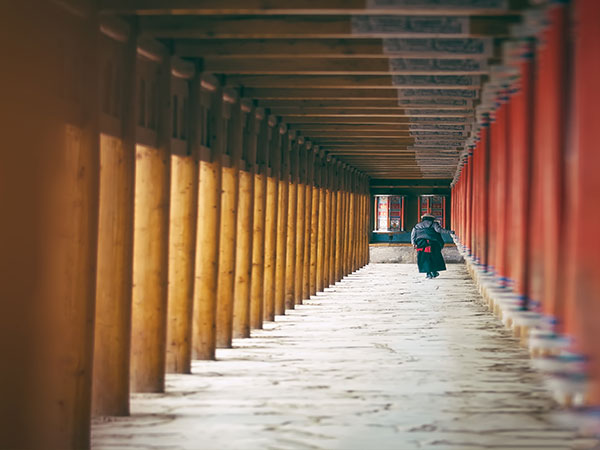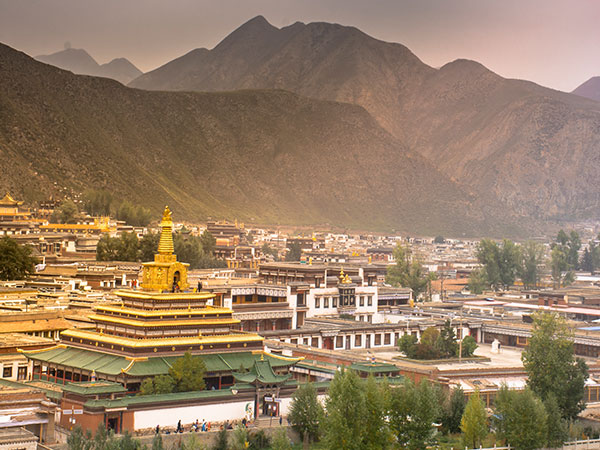Labrang Lamasery is one of the six Tibetan Buddhism temples belonging to Gelu Sect (the other five are Gandan Lamasery, Drepung Lamasery, Sera Lamasery in Lhasa, Tashilhungpo Lamasery in Shigatse Tibet Autonomous Region and Ta’er Lamasery in Huangzhong Qinghai Province). It is located in Xiahe County, Tibetan Autonomous Prefecture, Gansu Province. At present, Labrang Lamasery still keeps the most complete teaching system of the Tibetan Buddhism in China. And in 1982, Labrang Lamasery was listed in the national cultural heritages list.
The temple was initially built under the supervision of Jiamuyang, the first generation of Living Buddha in 1709, the 48th year in the reign of Kangxi of the Qing Dynasty. With the following living Buddhas to carry on the job it has now become the largest center for the Tibetan religious culture in Gansu, Qinghai and Sichuan provinces.
Covering an area of around 82 hectares with a floor space of 82,300 square meters the Labrang Lamasery consists of 6 scripture-chanting halls, 84 Buddha halls, 31 Tibetan style buildings, 30 palace-yards for Buddhas and over 500 meditation rooms as well as more than 10,000 abodes for lamas. The grand and elaborately decorated, the monastery provides a strong religious atmosphere of the Tibetans. Now the monastery holds seven large-scale summons ceremonies a year, but among them, the one in the first lunar month is the largest. The summon ceremony first began in the middle of the 18th century and based on a ceremony held in 1409 by Tsong kha-Pa (1357 –1419), the founder of the Gelupa Sect. The ceremony includes a series of religious activities, such as the free captive Animals Festival held on the 8th day of the first Tibetan lunar month, the Sun-Bathing Buddha Festival on the 13th day of the month and the Cham dance on the 14th day. In addition to this, during the ceremony, all the monks of the monastery would gather in the Grand Sutra Hall to recite Buddhist scriptures six times a day.
Apart from a spectacular collection of monastic buildings, the Labrang Monastery is also a treasure house with art treasures everywhere, such as stunning frescoes and tapestries, incredible carpentry, painted Tibetan furniture, white Tibetan scarves, stupas resplendent with jewels. Pooled together wisdoms of the Tibetan, Han and Mongolian people, the monastery is renowned for its exquisite art of architecture and brilliance of religious culture. But the most enchanting ones are the different kinds of Buddha statues and “thangkas”. It is said that the Labrang Monastey has a collection of about 10,000 “thangka” paintings by Tibetan folk artists in Qinghai Province.


